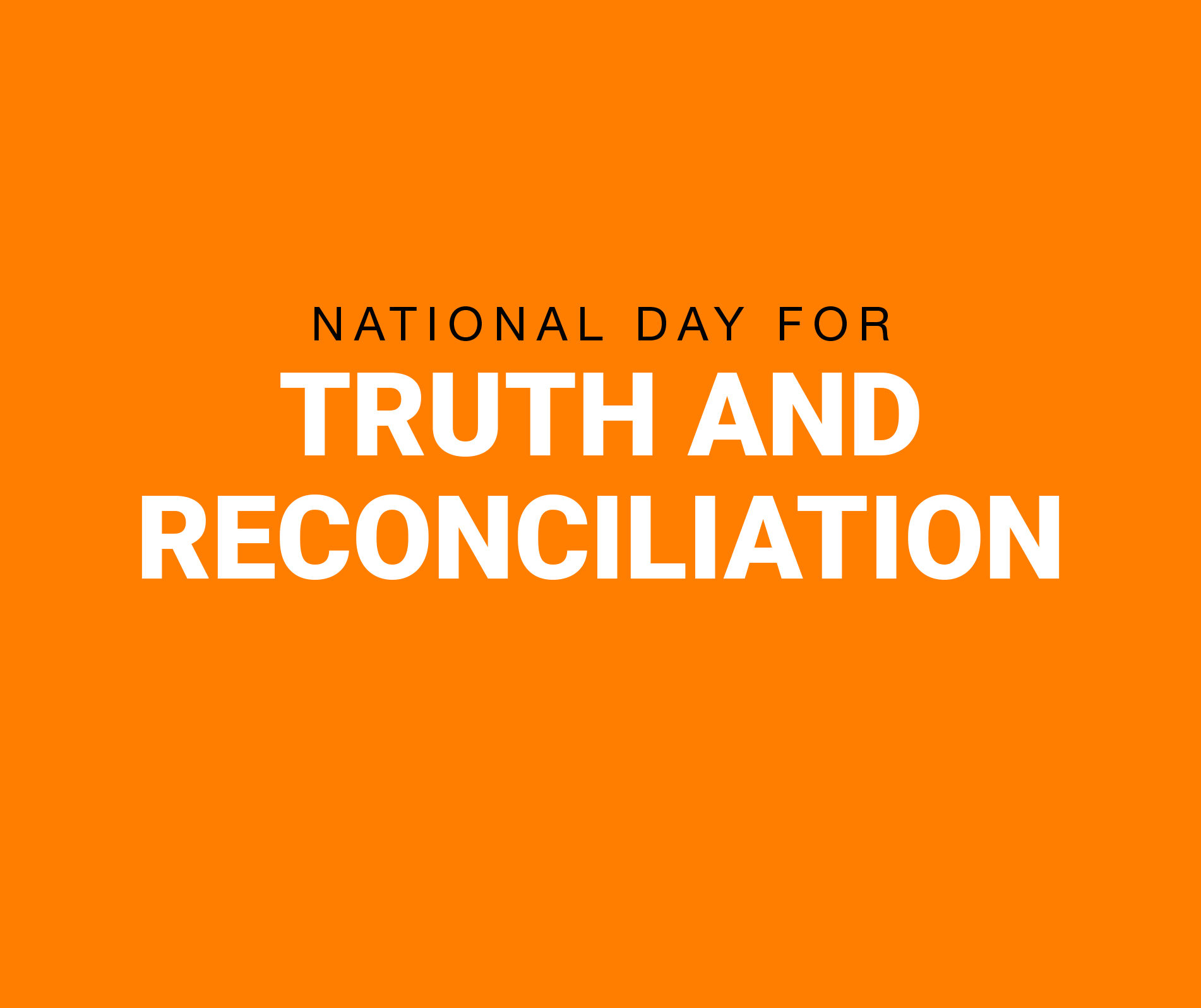Truth and Reconciliation Day: A Student’s Perspective

By Angela Paletta
September 30th is the National Day of Truth and Reconciliation. This day is an important step in acknowledging the past events and wrongdoings that have been endured by countless Indigenous families over many generations. The day is a start toward honouring survivors and working to repair relationships with Indigenous Peoples. Establishing a national day of memory and honour was one of the Truth and Reconciliation Commission’s 94 Calls to Action. Many people today still do not know — or understand — the ongoing trauma and devastation that residential schools created for survivors and their descendants. Having a national day where we take a step back as a community and as a country to reflect on the past crimes of our country and look for ways in which we can educate ourselves is important to help heal wounds and bring about the necessary change we must make as a country.
I decided to spend my time during Truth and Reconciliation Day reading and reflecting on the traumas of residential schools and the unmarked graves recently discovered of many hundreds of children. I read why orange shirts specifically are used to commemorate this important day. Phyllis Webstad wore a brand new orange shirt to her first day at St. Joseph’s Mission Residential School in British Columbia. When she arrived, she was stripped of her orange shirt, and it was never given it back. That shirt for her symbolizes the hurt, loss, and trauma she faced, and many other children faced, during their forced times at residential schools. Phyllis has been telling her story for years, but it has now become attached to the National Day of Truth and Reconciliation. She has been going into schools since 2013, trying to raise more awareness about the horror of residential schools and working to keep that part of history in the minds of Canadians today, not hidden in the background as it has been in the past. Phyllis’s hard work in keeping the history of residential schools became increasingly urgent with the horrific discovery of the unmarked graves of children found on numerous residential sites. Orange shirts are now a symbol of Truth and Reconciliation Day and a visual reminder of the trauma that the families and children still face.
But that isn’t the only thing I did that day. I also supported my brother, Victor Paletta, and four of his friends and fellow firefighters at the Six Nations reserve, Howard Anderson, Amalee Jacobs, and Calvin Thomas, who decided to create a 500 km run-a-thon fundraiser for the Save the Evidence Campaign. Working on the reserve, they see first-hand the traumas and struggles Indigenous people face, and they wanted to do their part in helping in any way possible: one of those ways was this fundraiser. Save the Evidence campaign’s objective is to raise awareness and funds to ensure that the former Mohawk Institute Residential School can become a historical site and educational resource. The goal is to save the evidence of residential schools — the darkest chapter in Canadian history. This campaign is important as it aims to ensure that residential schools are one part of Canadian history that is never forgotten, especially since the last residential school closed only in the 1990s.
My brother and his four fellow firefighters ran a collective total of 500 km and raised just over $5,000 for the campaign. They ran their last 20 km on Truth and Reconciliation Day. The campaign is organized through the Woodland Cultural Centre in Brantford. Anyone can donate to this campaign or run a campaign to raise awareness and funds for this extremely important cause, just as my brother and his fellow firefighters did.
My first Truth and Reconciliation Day was filled with a lot of learning and reflecting. For the first time, Canada is rallying together to support Indigenous people and their call for justice. This day marks the first step of many more Truth and Reconciliation Days in the years to come.
Angela Paletta is a Sheridan College student in the Honours Bachelor of Creative Writing & Publishing program. She is working at Rubicon Publishing/Plumleaf Press as part of her College Co-op/Internship Program. All staff at Rubicon/Plumleaf were given a half day away from their regular duties to spend reading about and reflecting on the tragic legacy of residential schools and what Truth and Reconciliation means to them.

